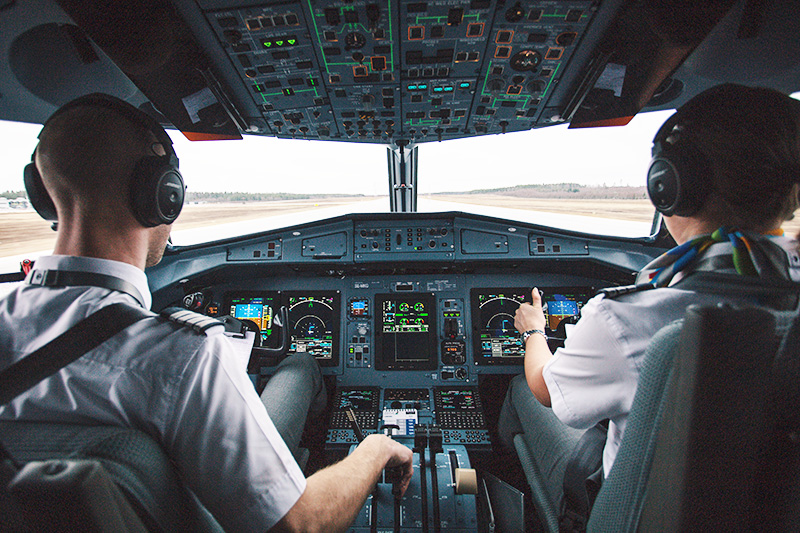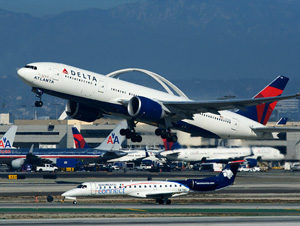
The airlines industry has enjoyed its time in the sun in recent years. During 2017, North American passengers reported rising satisfaction with airlines for the seventh year straight, and domestic airlines had their ninth straight year of higher revenue. According to the Bureau of Transportation Statistics (BTS), U.S. airlines brought home $15.5 billion last year, an improvement of over 10 percent from 2016.
With all of this positive news and growing demand for air travel, it likely does not come as a surprise to hear airlines are in the market for more pilots. However, the reasons fueling these hirings are more dramatic than simple growth. The airlines industry is facing a massive pilot shortage, necessitating serious policy changes today. While change can bring growing pains, we see this as an opportunity for carriers to cut loose excess and develop into leaner, more profitable companies.
Graying Pilots Unable to Fill Growing Demand
The clock is ticking for carriers that will need to replace their aging pilots with other specialized employees soon.
American pilots have a federally mandated retirement age of 65, offering airlines little wiggle room in their hiring timelines. Delta Air Lines estimates it will need more than 8,000 pilots over the next decade to fill all of the vacated cockpits. Boeing reports that, by 2036, there will be a global need for 637,000 new pilots. North America will require 18 percent of them, coming in just shy of 115,000 new pilots.
High Barriers to Entry for New Pilots
Filling these critically important seats isn’t as simple as posting a job listing. Individuals with the training required to become a pilot are not easy to come by, both due to aviation being a niche passion and as a result of domestic regulatory changes.
Becoming a pilot is expensive. ATP Flight School, one of Delta’s preferred schools for training, charges around $80,000 for an individual with zero flight experience to become a completely qualified commercial airline pilot.
Recent regulations could make it even more difficult for flight students as well. Five years ago, after the Colgan Air Flight 3407 crash, the Federal Aviation Administration (FAA) raised the minimum hours of flight experience from 250 to 1,500 – a 600 percent increase – for those training to become a commercial airline pilot.
While training is lengthy and expensive, starting salaries for pilots can be surprisingly low for such a high-pressure position. The median salary for a commercial pilot was $78,740 in May 2017, according to the Bureau of Labor Statistics; however, the Air Line Pilots Association (ALPA) has stated that regional carriers may pay less than half that amount.
As you might expect, major airlines pay higher, with captains making over $100,000. Additionally, many airlines have already begun raising wages to combat the pilot shortage, according to the Federal Aviation Administration’s Aerospace Forecasts Fiscal Years 2018-2038.
The recent Alaska Airlines/Virgin America merger illustrates another concern for the industry. As carriers consolidate, they may find themselves encumbered with excess capacity without the crew to operate the combined equipment.
Delta Experiments with Hiring from Within
When it comes to hiring new pilots, Roger Phillips, an ALPA spokesperson, says that “if you pay them, they will come.”
Delta Air Lines appears to be embracing this attitude. The second-largest U.S. airline told its workers that, if they take an unpaid leave of absence to attend flight school, they will have a job waiting for them – flying a Delta jet.
Airlines Creating Programs to Make Aviation Careers More Accessible

The Delta Propel Pilot Career Path Program is working to make a career in aviation even more attractive to both students and employees. It estimates that potential pilots could take their place in a cockpit in 42 months, around three and a half years. Employees and students would also be paired with an active Delta pilot for mentorship.
Delta isn’t the only airline taking its company’s future into its own hands. America Airlines recently launched the American Airlines Cadet Academy in April of this year. Cadets in this program train at one of American’s partner flight schools and may receive a loan of up to the total cost of the program from Discover Student Loans. This financing program hopes to address the monetary burden restricting access to potential pilots by providing competitive loans with zero fees and deferred payments for up to three and a half years.
Faced with fewer pilots, carriers will need to rein in capacity growth and cut unprofitable routes, among other things. This will help them become leaner, more efficiently managed companies.
Gain Exposure to the Fast-Growing Airlines Industry with JETS
The U.S. Global Jets ETF (JETS) is the only airline-focused exchange-traded fund available today, making it a convenient “one-click” way to invest in the global airline market, which includes not just commercial carriers but also airline operators and manufacturers.
The fund tracks the U.S. Global Jets Index (JETSX), which is rebalanced and reconstituted quarterly using a quantamental, smart-beta approach.
Smart beta refers to investment strategies that emphasize the use of alternative weighting schemes to traditional market capitalization based indices.
All opinions expressed and data provided are subject to change without notice. Some of these opinions may not be appropriate to every investor.
